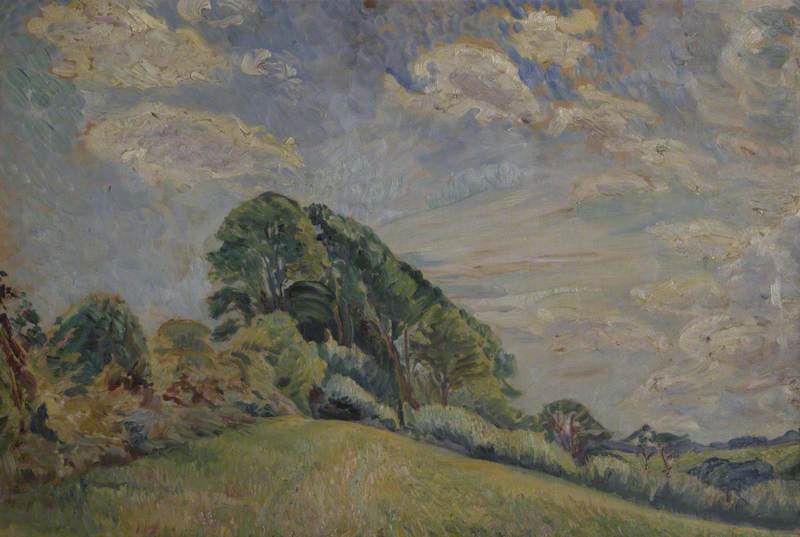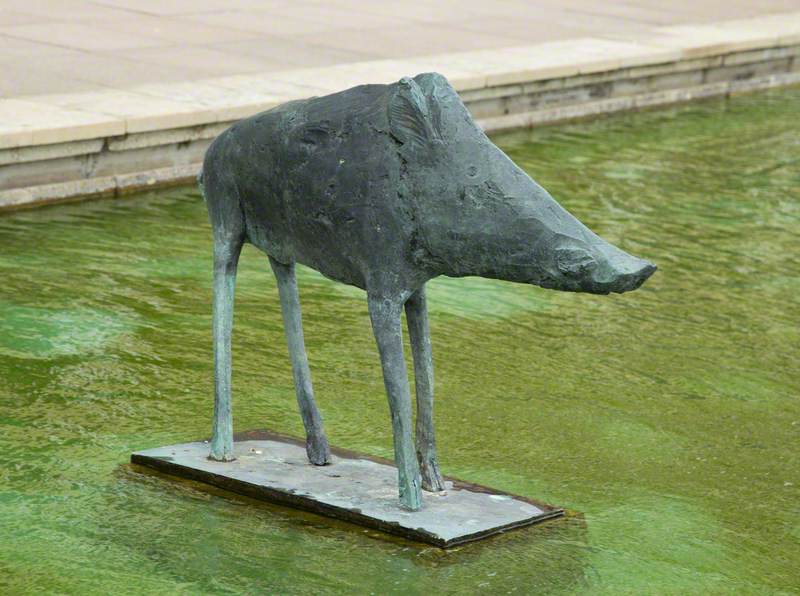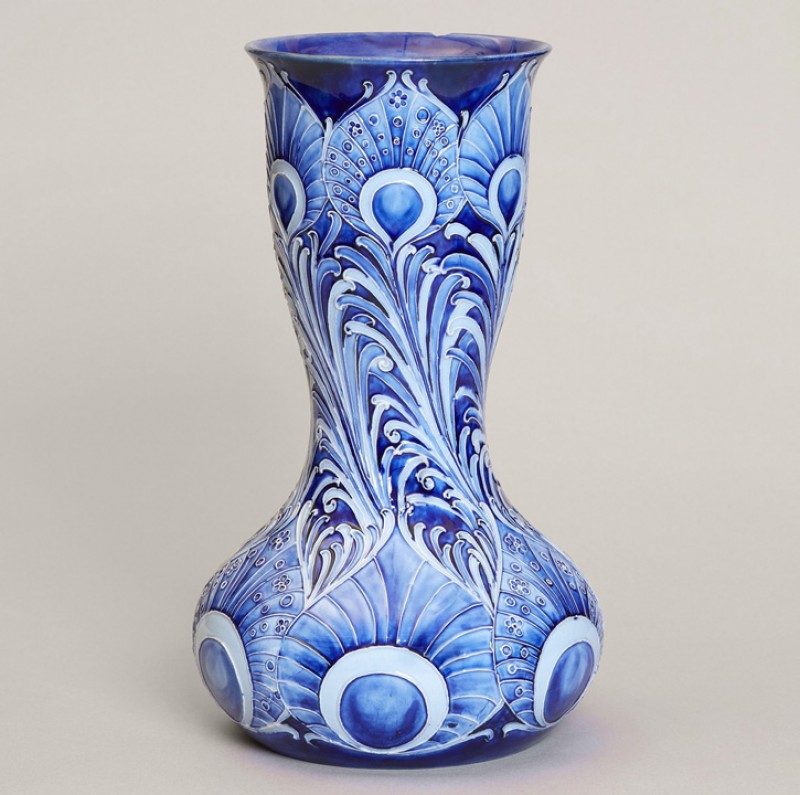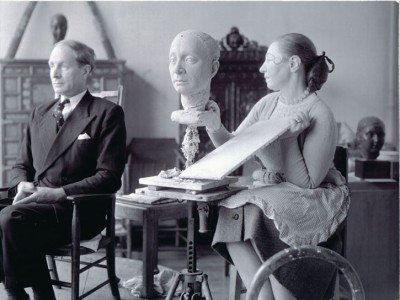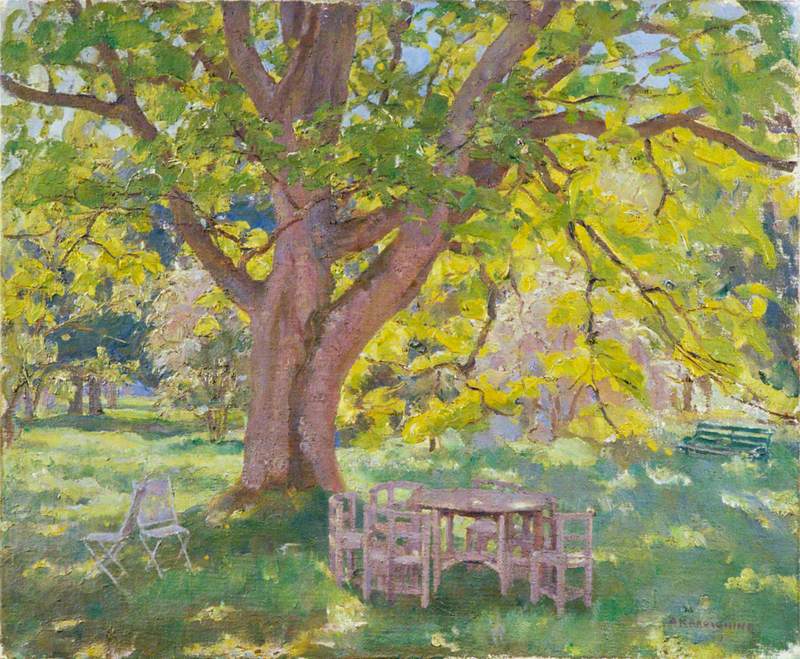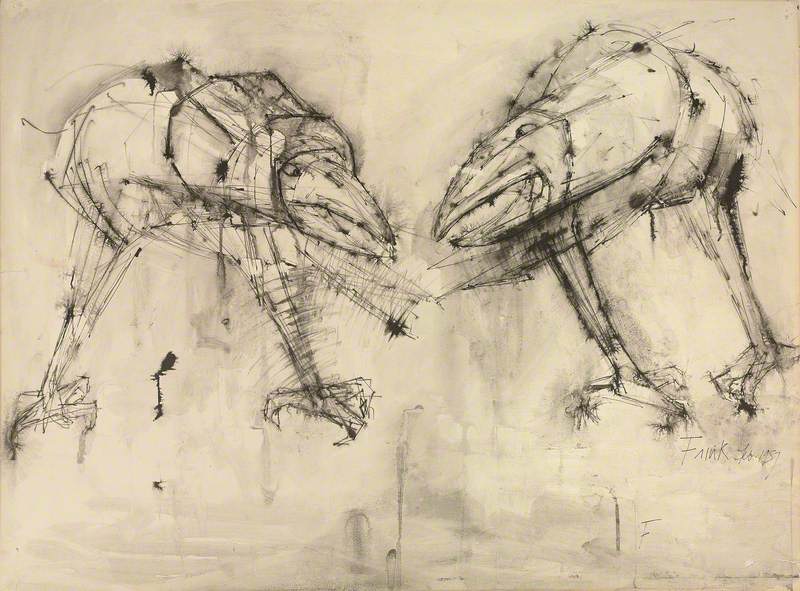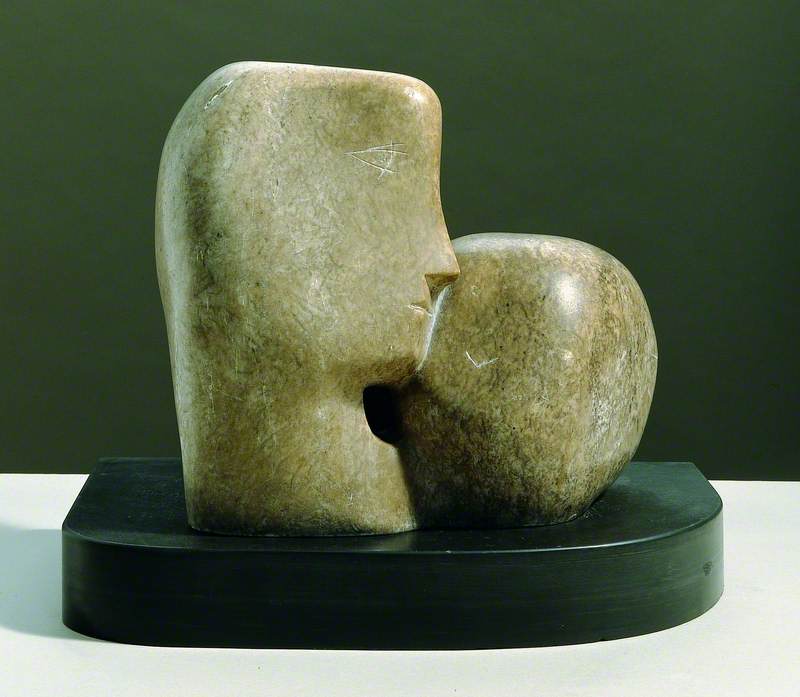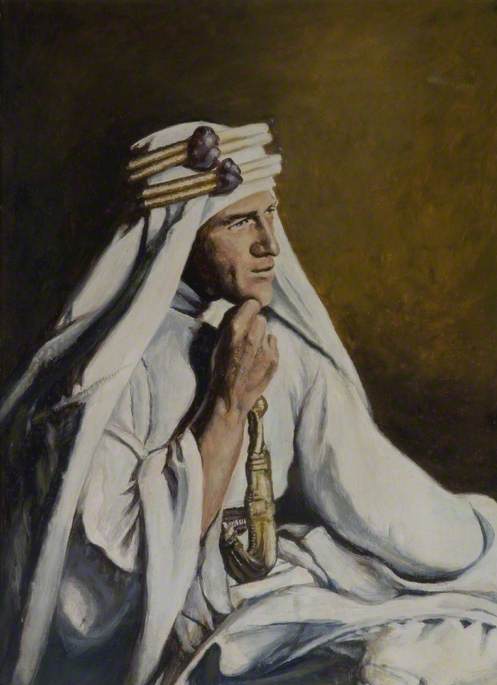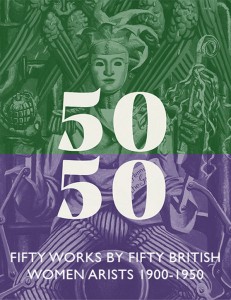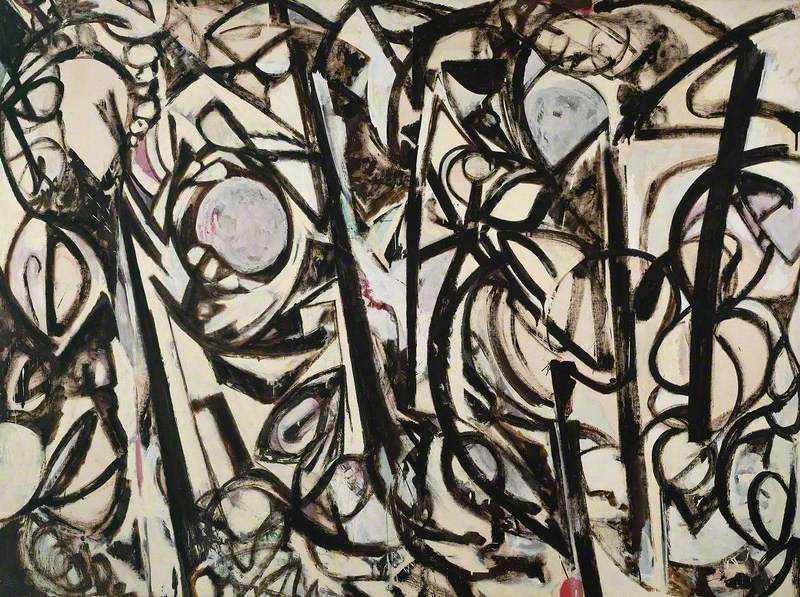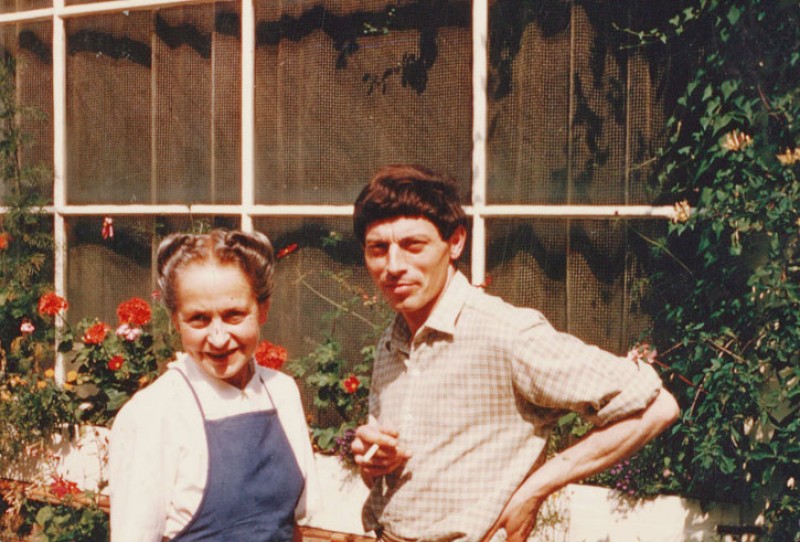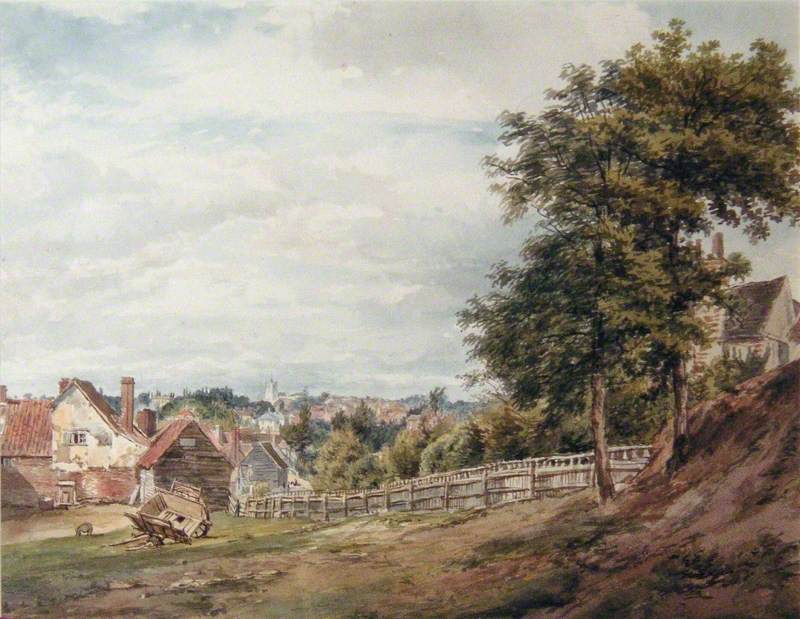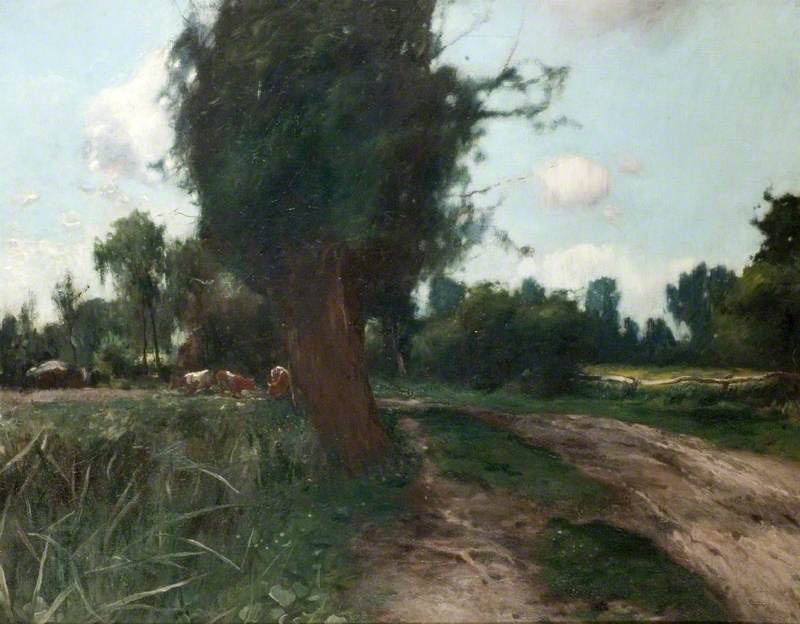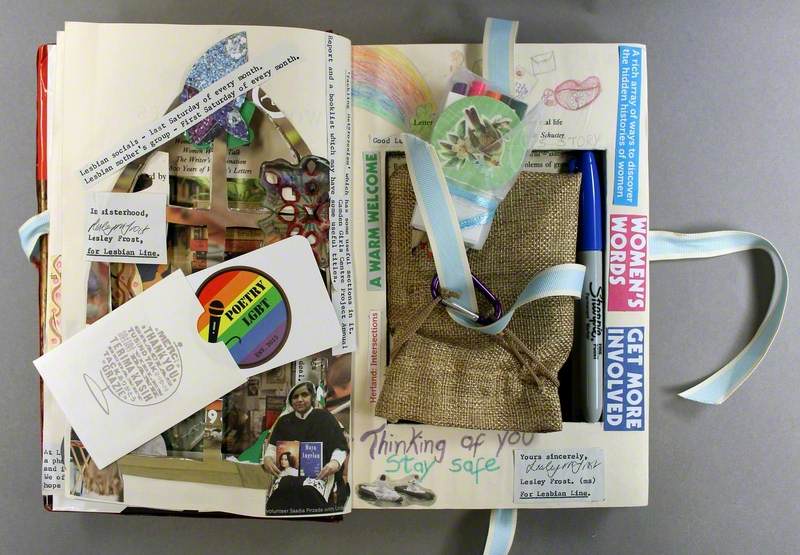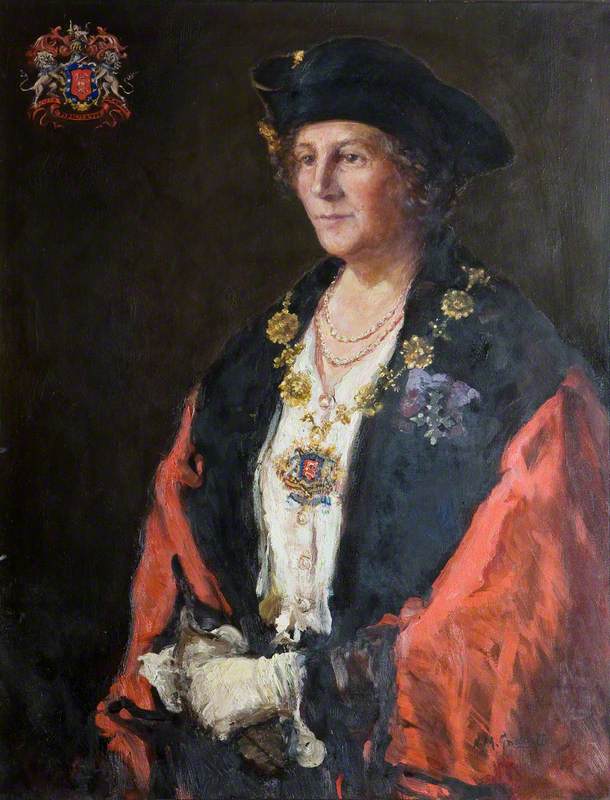Alice Buxton Winnicott, née Taylor (1891–1969), artist, painter and potter was born on 4th November 1891 in Claverdon, Warwickshire. Initially home educated, Alice went on to the King Edward VI High School for Girls in Birmingham. In 1912 she went up to Cambridge with a four-year exhibition scholarship from her school to Newnham College (1912–1915).
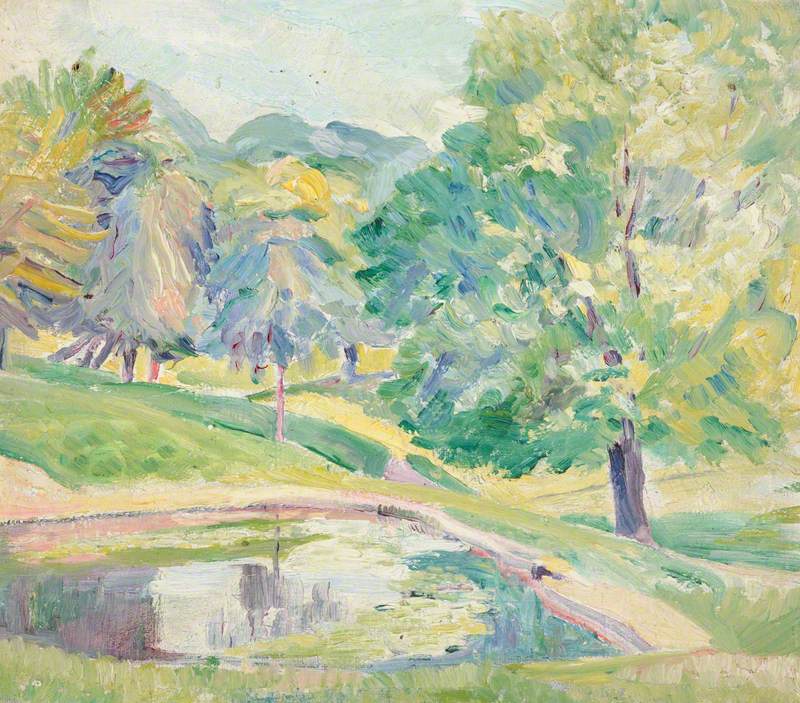
© the artist's estate. Image credit: Newnham College, University of Cambridge
A Tree-Lined Pond, Hampstead Heath
Alice Buxton Winnicott (1891–1969)
Newnham College, University of CambridgeHer studies were interrupted by the First World War, and she began a five-year period (1916–1921) in which she worked at the National Physical Laboratory in Teddington, Middlesex, as a junior assistant in the metallurgy department, carrying out research into ceramics and optical glass. For most of her time at the Laboratory, Alice was the only woman research student, testing materials under very high temperatures and casting optical glass pots under pressure.
Alice’s own memoir gives an insight into the impact of her work manipulating fine materials for scientific end. She wrote: ‘While working during the war of 1914–1918 with meltings of metal and glass at high temperatures I could not help being surprised at the extreme beauty of the simple Morgan fireclay crucible. How much more lovely than anything produced on the market! Such beauty and simplicity of line could not be found in any known article sold either for use domestically or for ornament’s sake; I suddenly became filled with desire to produce simple, beautiful shapes in earthenware or china which could be continuous in supply, useful and within the range of the purse of the ordinary man.’
On leaving the National Physical Laboratories, Alice began to seriously pursue a career change as an artist. Her entry in Artists in Britain since 1945. Vol 2 (Buckman, 2006) supports a view of her pioneering role as an artist, stating that she worked with important artists of the time studying in art schools in Richmond, Kingston, Wimbledon, Central School of Arts and Crafts and St Johns Wood School of Art. She was instrumental in the foundation of several art groups including the New Kingston Group of painters in 1928.
On 7th July 1923, Alice wed the physician and pioneering psychoanalyst Donald Woods Winnicott (1896–1971). During the time of their marriage Alice Winnicott was an accomplished painter, potter and sculptor. She exhibited in the Royal Academy and at the Royal Cambridge Academy and in 1938 she showed her work in the South Wales Art Society 50th Anniversary Exhibition. One of her sculptures, a bronze bust of T. E. Shaw (T. E. Lawrence), created after his untimely death, is part of the collection of Llyfrgell Genedlaethol Cymru / The National Library of Wales.
Between 1935 and 1947 Winnicott owned the Upchurch pottery in Kent (dates by her own account, other sources date her ownership as 1938–1953). She began to design her own lines and established the Claverdon range of dinnerware working alongside Edward Baker as manager. She found a market for her work in Heal’s, the department store in London that was successful in promoting ‘inexpensive design’ in this period of austerity.
Although not a keen advocate for psychoanalysis herself, Alice was extremely supportive of her husband’s work and cared for a number of his adolescent patients in the family home, several of whom required skilful care and attention. During the Second World War, Donald was away for long periods working for the Government Evacuation Scheme in Oxfordshire. Alice volunteered at Mill Hill School hospital during the war, offering occupational therapy through painting and pottery.
In the early years of their marriage, Donald and Alice were frequent visitors to Helen and Jim (Harold Stanley) Ede’s, their neighbours in Hampstead, as Winnicott and Ede were childhood friends. Ede curated at the Tate Gallery during this time and was close friends with, and a collector of, many of the contemporary painters and sculptors of the time, holding regular soirees and events. Ede’s daughters were regular guests at the Winnicott household whilst their parents travelled and their audio memories are part of the Kettle’s Yard collection (University of Cambridge).
Although there are a number of reports of Alice’s emotional fragility, most of these come from sources close to Donald Winnicott during his marriage to his second wife, Claire Winnicott, née Britton. Those who knew Alice recognised an ‘other-worldliness’ about her and elements of fragility, but they also described her as ebullient, good hearted, enthusiastic and very loving. Intellectually and creatively an astute and pioneering woman, she was nonetheless shocked by her divorce in 1949 and Donald’s subsequent remarriage in 1951.
Alice Buxton Winnicott moved to a little cottage in Wargrave on the Thames and finally moved to live near her younger sister Pauline at Gilfachrheda in Cardiganshire. Although there is no evidence of any further exhibiting of her artistic output after this time, family members say that she always had a studio for drawing and painting and a kiln for her pottery. She died on 19th November 1969, aged 78, and is buried in New Quay, Cardiganshire.
Dr Julie Greer
